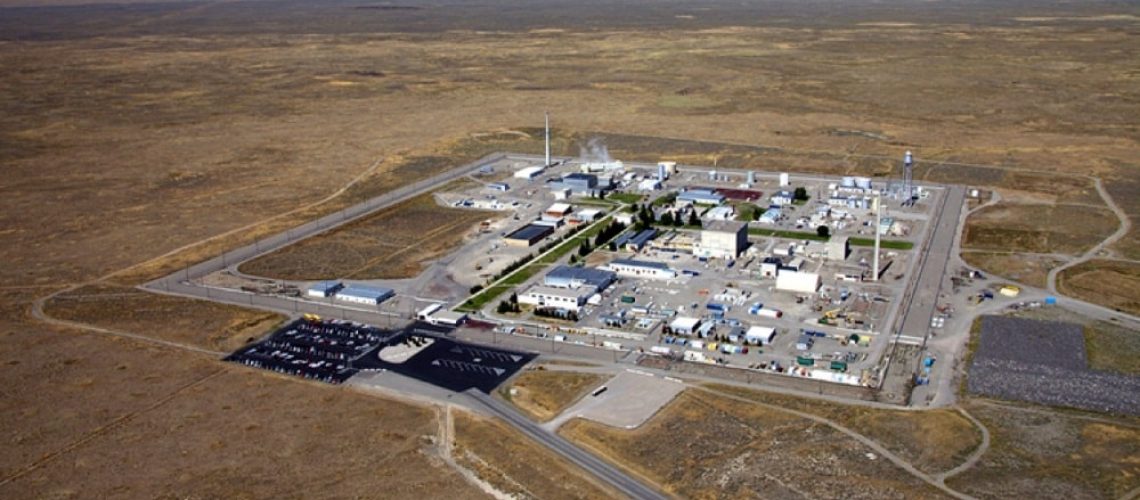The U.S. Department of Energy is investigating the possibility of using federal land to address the growing demand for data centers to power artificial intelligence — and the energy infrastructure that needs to be paired with it.
The DOE released a request for information (RFI) to inform possible use of department-owned land for AI infrastructure development to support growing demand for data centers. The DOE has identified 16 potential sites as well suited for rapid data center construction, including in-place energy infrastructure with the ability to fast-track permitting for new energy generation. By co-locating data centers and new energy infrastructure on federal lands, the DOE aims to ensure that the United States is at the forefront of global AI development while also lowering energy costs.
The 16 designed sites are:
- Idaho National Laboratory
- Paducah Gaseous Diffusion Plant
- Portsmouth Gaseous Diffusion Plant
- Argonne National Laboratory
- Brookhaven National Laboratory
- Fermi National Accelerator Laboratory
- National Energy Technology Laboratory
- National Renewable Energy Laboratory
- Oak Ridge National Laboratory
- Pacific Northwest National Laboratory
- Princeton Plasma Physics Laboratory
- Los Alamos National Laboratory
- Sandia National Laboratories
- Savannah River Site
- Pantex Plant
- Kansas City National Security Campus
In accordance with the Trump administration‘s executive orders related to “Removing Barriers to American Leadership in Artificial Intelligence” and “Unleashing American Energy,” the DOE is exploring opportunities to accelerate AI and energy infrastructure development across the country, prioritizing public-private partnerships to advance the use of innovative technologies and strategies.
“With today’s action, the Department of Energy is taking important steps to leverage our domestic resources to power the AI revolution, while continuing to deliver affordable, reliable and secure energy to the American people,” said Secretary of Energy Chris Wright.
The department is seeking input from data center developers, energy developers, and the broader public to further advance this partnership. The information collected will be used to inform development, encourage private-public partnerships and enable the construction of AI infrastructure at select DOE sites with a target of commencing operation by the end of 2027.
The sites also offer the industry a chance to partner with DOE’s world-class research facilities co-located on the sites, furthering advancements in both the power systems design needed to run the centers and developing next-generation data center hardware. Publicly available information about each site, including location, available acreage, and other characteristics is provided in appendices to the RFI.
Additionally, the RFI aims to gather information on potential development approaches, technology solutions, operational models, and economic considerations associated with establishing AI infrastructure.
The solar and energy storage industry has been at the forefront of developing facilities to power data centers. Last October, the DOE helped celebrate the opening of three solar projects in Texas (Orion I, Orion II, and Orion III) that together will produce 875 MW of electricity to help power Google’s data centers in the state.
With increasing demand for data centers, solar can help ease capacity shortfalls, according to Jeff Cramer, president and CEO, Coalition for Community Solar Access (CCSA).
“Demand is surging due to population growth, data centers, AI, and electrification. Grid operators like PJM are warning of capacity shortfalls and price spikes,” Cramer wrote in a recent column for Solar Builder. “Community solar and other forms of distributed solar and storage are uniquely positioned to help meet this challenge because it can be deployed faster and closer to load than large-scale projects. They also offer a rare political sweet spot — garnering bipartisan support by delivering lower energy costs, boosting local economies, and enhancing grid resilience.”
Meanwhile, the National Electrical Manufacturers Association (NEMA) has been establishing clear performance expectations for battery energy storage systems (BESS) to assist data center developers and other end users in making informed decisions about which BESS products to deploy to improve reliability and resilience and power economic development.
“An upcoming NEMA study projects that U.S. data center electricity demand will double, or potentially even triple, by 2030,” said Patrick Hughes, senior VP of technical affairs at NEMA. “If the United States wants to lead the world in AI, we need tools like energy storage that will help create a reliable supply of electricity to power new data centers.”
Tags: artificial intelligence



